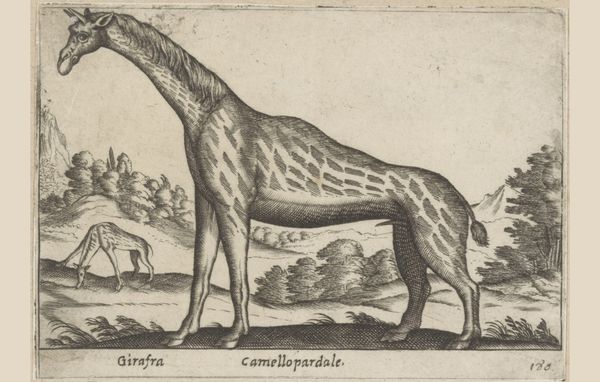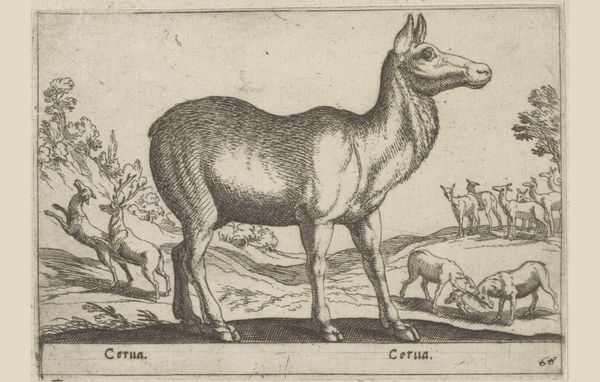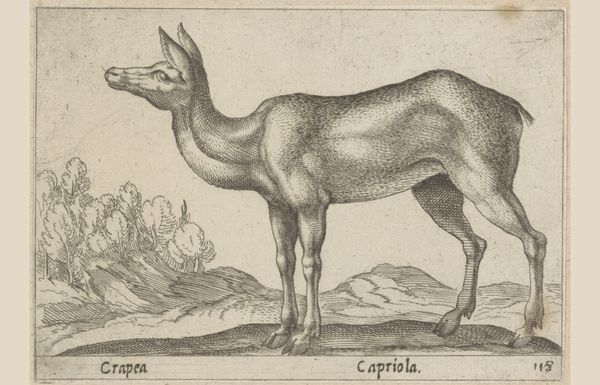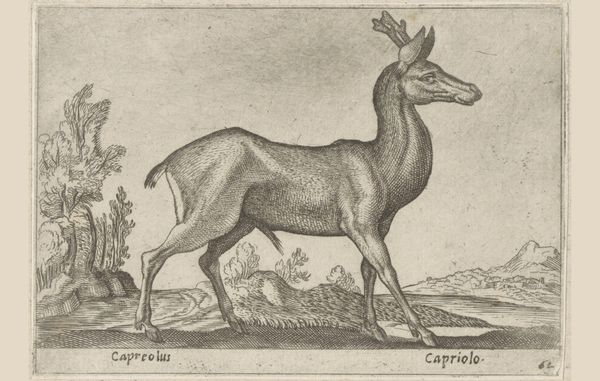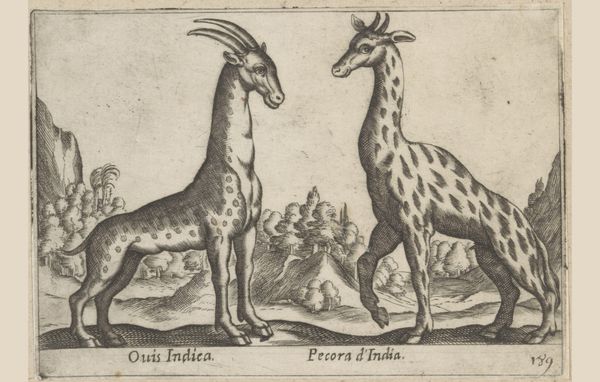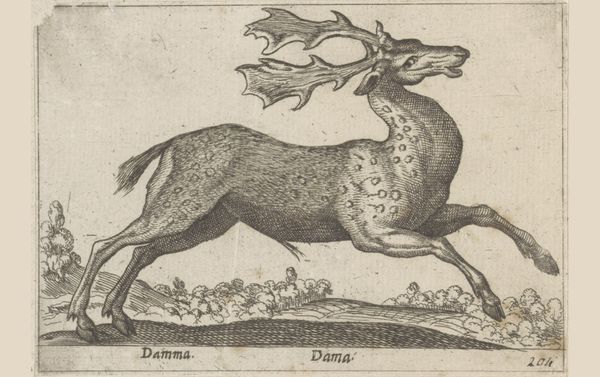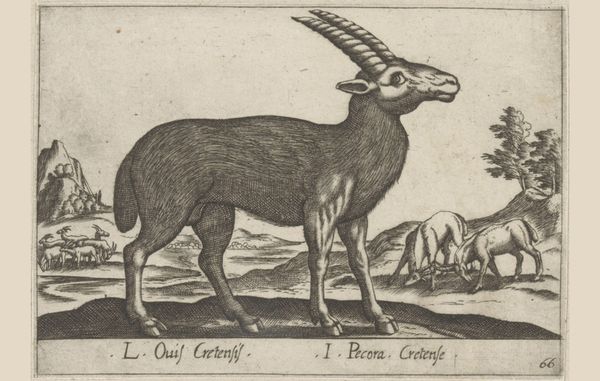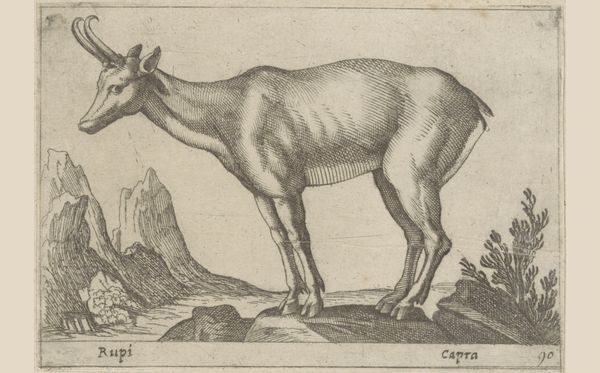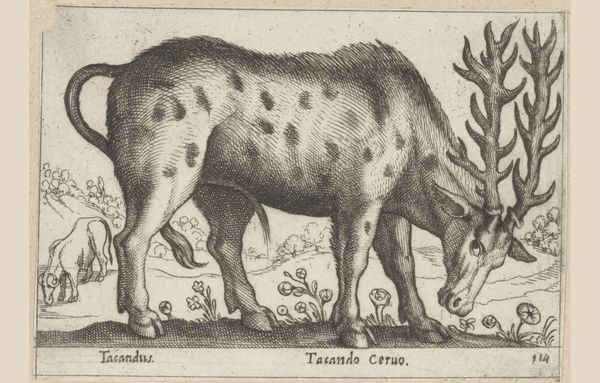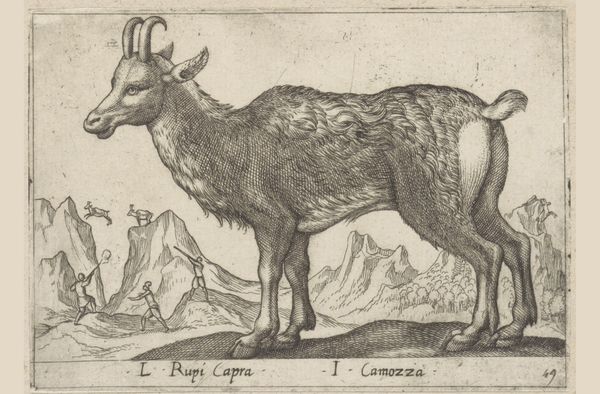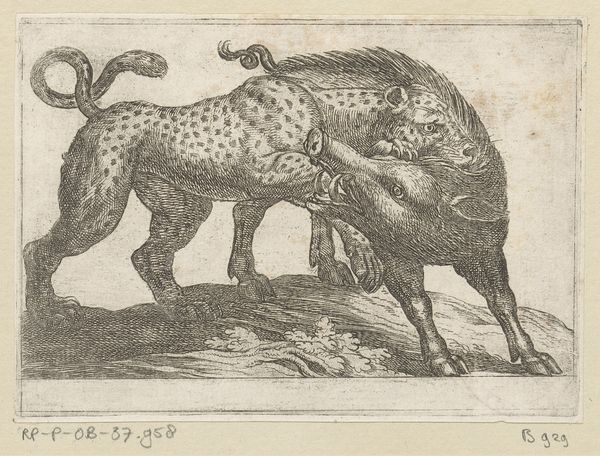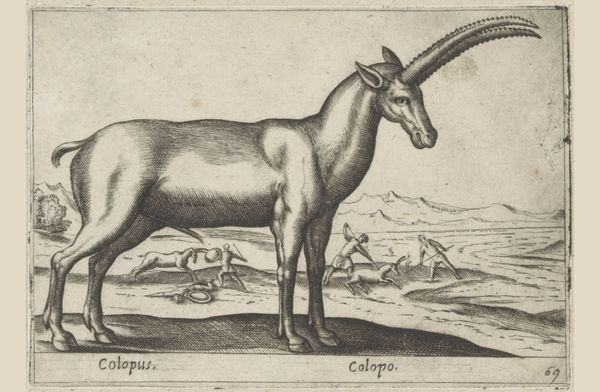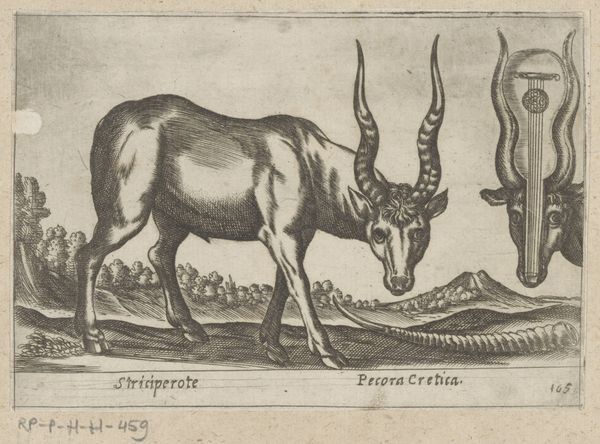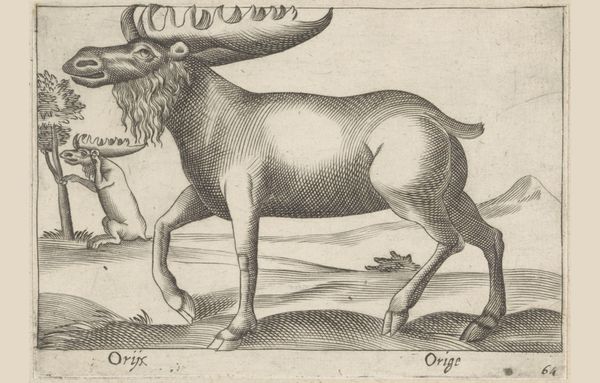
print, engraving
#
baroque
# print
#
figuration
#
engraving
Dimensions: height 95 mm, width 137 mm
Copyright: Rijks Museum: Open Domain
Editor: So this engraving is called "Giraffe", made before 1650 by Antonio Tempesta. It's held in the Rijksmuseum. I'm really struck by how strange it looks, not quite like any giraffe I've seen. What does it make you think about? Curator: It's interesting you say that. Representations of animals, especially exotic ones, were often filtered through existing cultural understandings. This image likely says more about the *idea* of a giraffe in Europe before 1650 than the actual animal. What sort of knowledge, if any, did the artist have about giraffes, and how would it have been mediated? Did they have access to reliable sketches, descriptions, or even the animal itself? Editor: That’s a good point! I hadn't considered the role of second-hand descriptions. Curator: Exactly. Notice how the giraffe is placed in a very European-looking landscape? It tames the exotic animal by placing it in a familiar context, shaping its perception for a European audience. Editor: So the environment is less about accuracy and more about making it digestible for viewers? Curator: Precisely! And think about the implications of owning, displaying, and illustrating such creatures. What did this mean in terms of power dynamics, colonial ambitions, and the control of the natural world? Editor: This makes me wonder about the original patrons, too, and what statement they were trying to make. Thanks for opening my eyes to that! Curator: And I appreciate your reminding me how potent first impressions are, and how vital it is to consider how these images can be shaped. It highlights the constructed nature of even seemingly straightforward depictions.
Comments
No comments
Be the first to comment and join the conversation on the ultimate creative platform.
